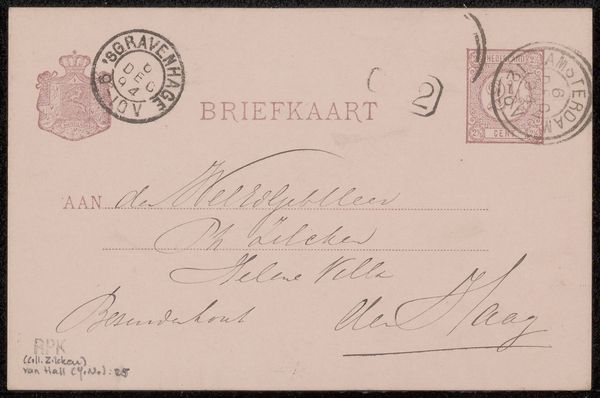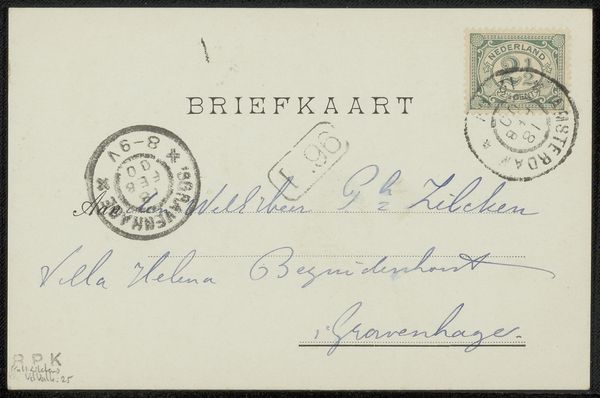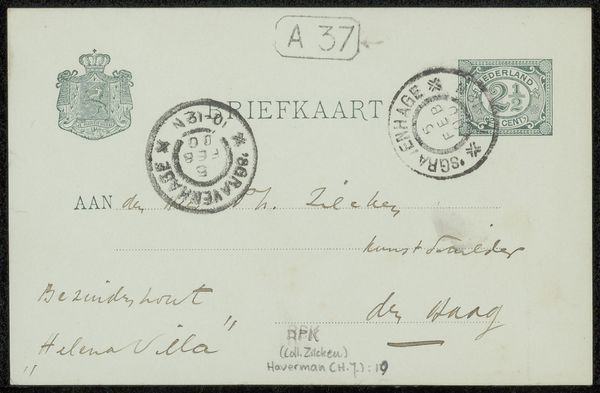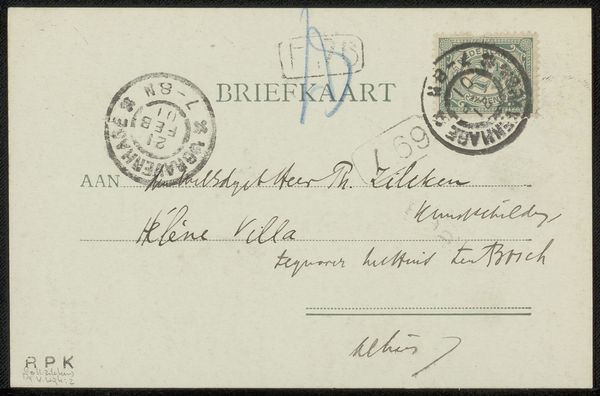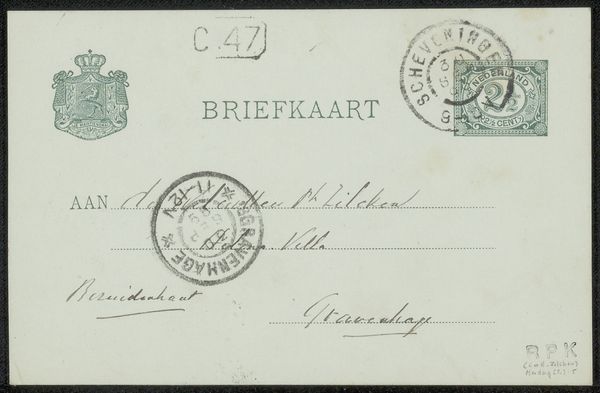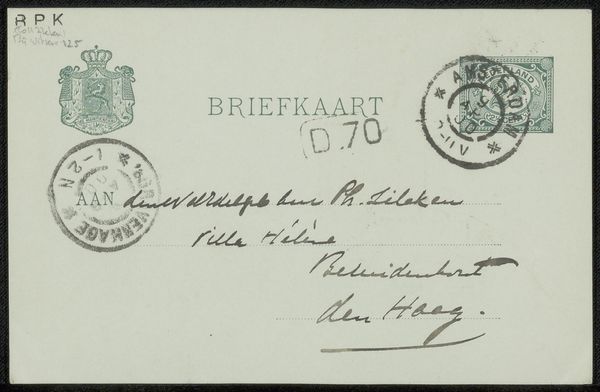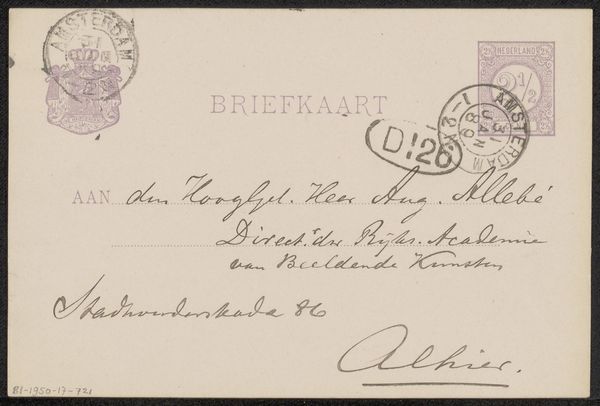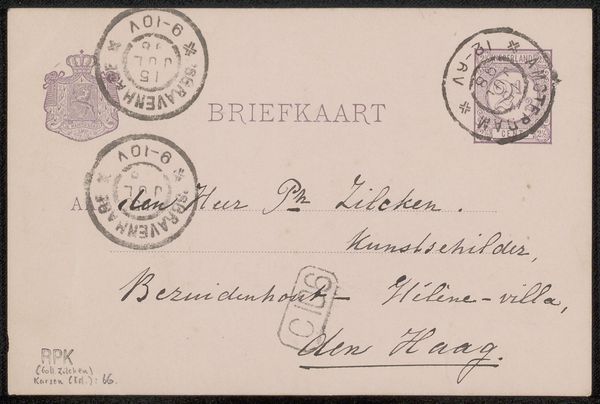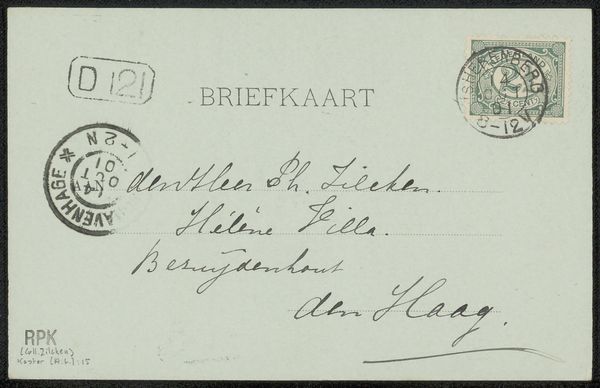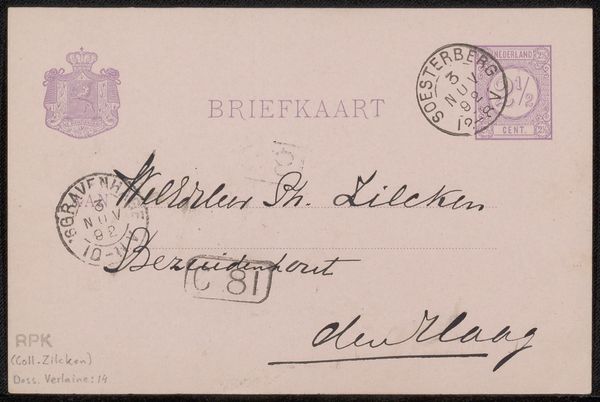
paper, ink
#
dutch-golden-age
#
paper
#
ink
#
calligraphy
Copyright: Rijks Museum: Open Domain
Curator: Here we have “Briefkaart aan Philip Zilcken,” a postcard from the Rijksmuseum's collection, believed to have been produced sometime between 1903 and 1918. It's ink on paper. Editor: My immediate impression is one of bygone days – the slightly faded ink, the postal stamps, the careful script… it feels like holding a tiny, tangible piece of history. Curator: Precisely. Let’s consider this from the viewpoint of production and social exchange. This wasn’t just about sending a message. Paper quality, the choice of ink – even the act of physically writing reflects a specific labor process. The materiality of it is significant in and of itself. Editor: I am much more drawn to the layers of encoded imagery and the symbols of statehood displayed on it. The postmark, for instance, with its coat of arms and "Je Maintiendrai" motto, speaks of a civic identity rooted in history. There's also the calligraphic styling itself, which is rife with significance. It conveys layers of meaning through subtle stylistic variations. Curator: I see the importance of imagery, yet I argue we shouldn’t forget how these postcards acted as crucial elements in a communications network – binding people across geographic expanses and across varied socio-economic positions. Its materiality determined, at least to some degree, who could produce and access them. The postal infrastructure facilitating exchange and commerce should not be omitted. Editor: Still, it all hinges on decoding visual signs! Look closely: we must consider this postcard as more than an object; instead, view it as a portal transporting cultural memory. It shows handwriting styles valued in Dutch culture at the turn of the century; there are symbols signifying identity… all interwoven in layers accessible to those prepared to decipher them. Curator: Agreed, there are stories hidden in the design, but the object as a material artifact carries just as rich of meaning when considered a product of industry that also shaped consumer habits in that era. We cannot divorce these signs and symbols from a larger context related to production, availability, and exchange. Editor: I believe this brief look has underscored how deeply imagery influences, constructs, and conveys messages that last across eras, whereas you've emphasized how deeply they mirror prevailing methods of mass-communications production during particular times. Curator: It seems the convergence lies somewhere between recognizing historical forces influencing image production and understanding meanings such objects carried in everyday communications systems.
Comments
No comments
Be the first to comment and join the conversation on the ultimate creative platform.

